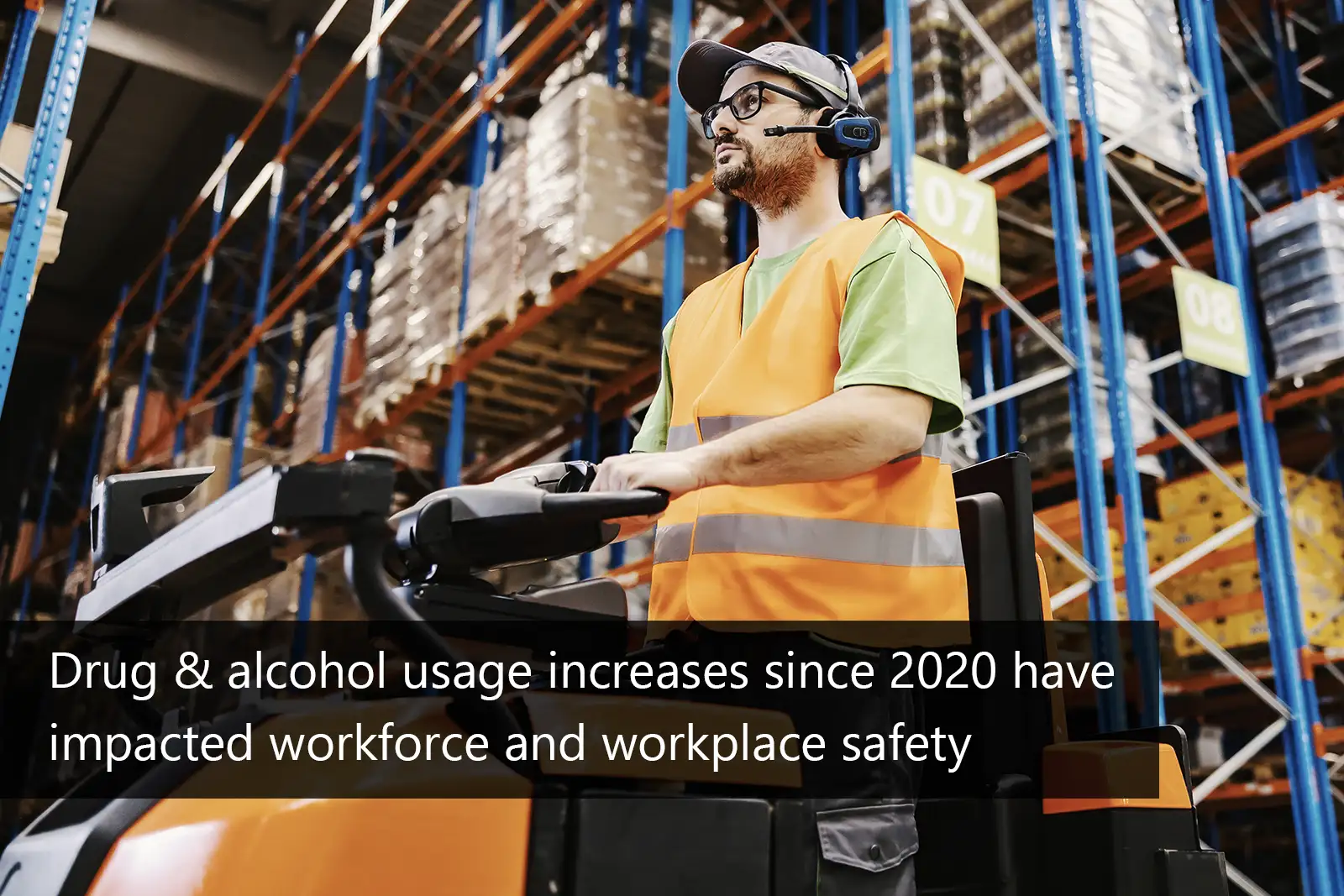Last Updated: July 11, 2023
The pandemic has had a profound impact on the mental health and substance use of millions of people around the world. According to a recent survey by the Substance Abuse and Mental Health Services Administration (SAMHSA), Americans reported that pandemic adversely affected their mental health, including by exacerbating use of alcohol or drugs among people who had used drugs in the past year. This article will explore how the pandemic influenced drug usage increases, and how that in turn has affected workplace and workforce safety.
One of the main factors that contributed to increased drug use during the pandemic was stress. Many people faced unprecedented challenges such as job loss, social isolation, financial hardship, grief, and uncertainty about the future. These stressors can trigger or worsen mental health problems such as depression, anxiety, and post-traumatic stress disorder (PTSD), which can in turn increase the risk of substance use disorders (SUDs) or relapse among people who are in recovery. This was compounded by some who chose drugs and alcohol as a way of coping with boredom, loneliness, or lack of social support during lockdowns or quarantines.
Another factor that influenced drug use during the pandemic was the disruption of treatment and harm reduction services. Many people who were receiving medication-assisted treatment (MAT) for opioid use disorder (OUD) faced barriers to accessing their prescriptions due to reduced clinic hours, travel restrictions, or fear of exposure to the virus. Similarly, many people who were attending counseling, peer support groups, or other psychosocial interventions had to switch to online or phone-based services, which may not have been as effective or accessible for some individuals. Additionally, some harm reduction programs such as needle exchange sites or overdose prevention sites had to close or limit their operations due to public health measures or lack of resources. These changes increased the risk of overdose, infection, or other harms among people who use drugs.
The increased drug and alcohol use during the pandemic had significant implications for workplace and workforce safety. According to data from Quest Diagnostics, drug use in the American workforce was the highest it’s been in 16 years in 2020. This is concerning because substance use can impair cognitive and motor skills, judgment, decision-making, and reaction time, which can increase the risk of accidents, injuries, errors, or violence in the workplace. Moreover, substance use can affect productivity, performance, absenteeism, turnover, morale, and health care costs among employees. Additionally, a rise in drug abuse during the pandemic could account for between 9% to 26% of the decline in labor force participation among people aged 25 to 54 between February 2020 and June 2021. This suggests that some people may have dropped out of the workforce due to SUDs or related problems.
According to Quest Diagnostics, one of the leading providers of diagnostic information services, drug test positivity rates have climbed to the highest level in two decades, driven mainly by the increase in marijuana use.
The overall positivity rate in the combined U.S. workforce, based on nearly nine million urine drug tests collected between January and December 2021, was up in 2021 to 4.6% compared to 4.4% in 2020 and up 31.4 percent from the all-time low of 3.5% just 10 years ago (2010-2012). In contrast, the positivity rate in the federally mandated, safety-sensitive workforce, based on more than two million urine drug tests, declined 8.3 percent (2.4% in 2019 versus 2.2% in 2020) but was still 10 percent higher than the 2016 rate (5 years prior).
The most significant change in drug test positivity was observed for marijuana, which increased by 16% in the general U.S. workforce (3.1% in 2019 versus 3.6% in 2020) and by 25% in the federally mandated, safety-sensitive workforce (0.84% in 2019 versus 1.05% in 2020). Marijuana remains the most commonly detected drug in urine drug tests, followed by amphetamines (which includes methamphetamine), opiates (which includes heroin), cocaine, and benzodiazepines.
The increases in drug and alcohol usage has no doubt affected workplace and workforce safety by impairing workers’ abilities and reducing labor force participation. With Vault Workforce Screening, implementing programs for pre-employment, random, reasonable suspicion, post-accident, or return to duty drug testing couldn’t be easier. Click below to schedule a demo and learn how Vault can help you develop the best program for your needs.
Schedule your free program review today.

